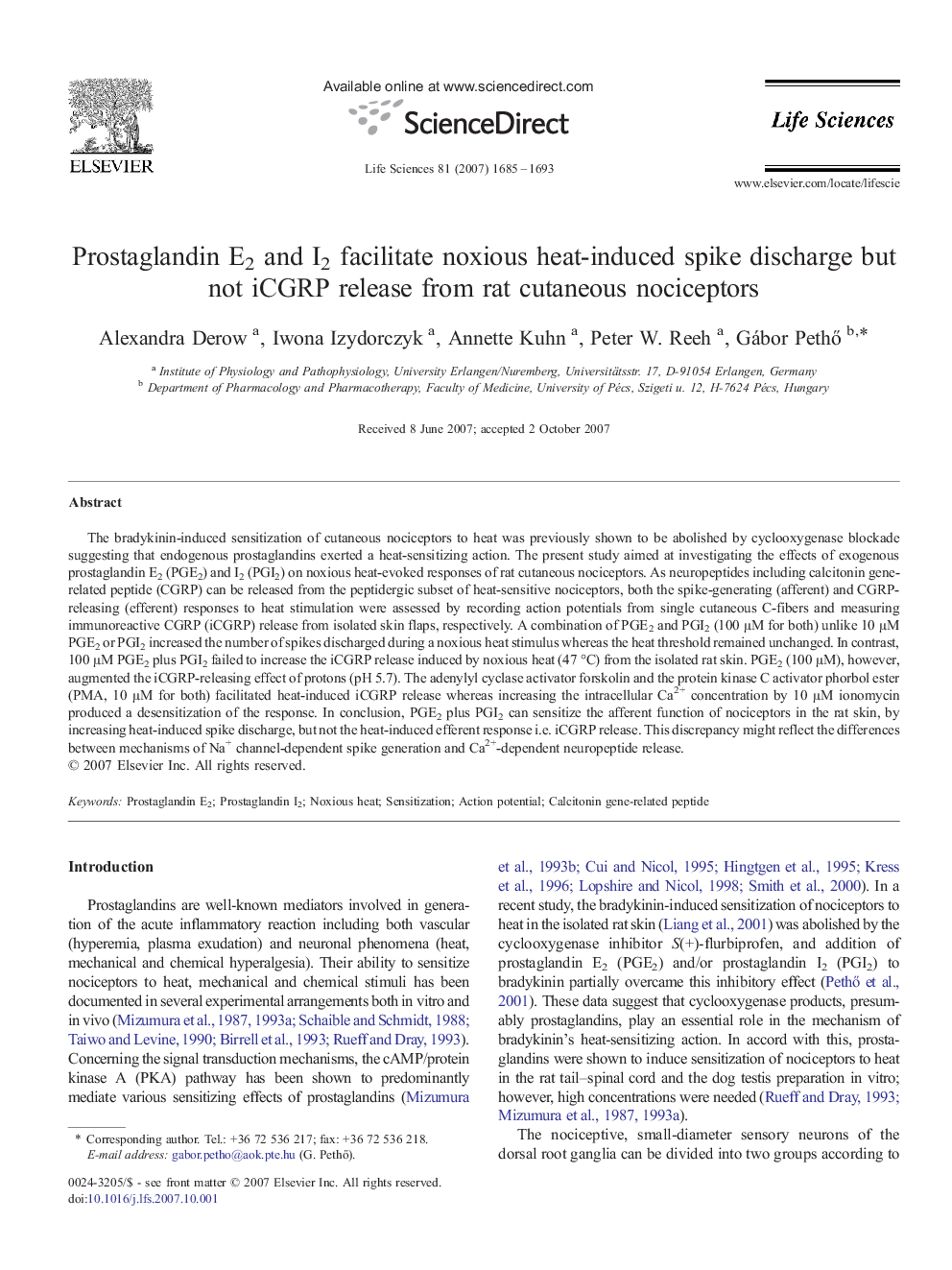| کد مقاله | کد نشریه | سال انتشار | مقاله انگلیسی | نسخه تمام متن |
|---|---|---|---|---|
| 2553042 | 1560763 | 2007 | 9 صفحه PDF | دانلود رایگان |

The bradykinin-induced sensitization of cutaneous nociceptors to heat was previously shown to be abolished by cyclooxygenase blockade suggesting that endogenous prostaglandins exerted a heat-sensitizing action. The present study aimed at investigating the effects of exogenous prostaglandin E2 (PGE2) and I2 (PGI2) on noxious heat-evoked responses of rat cutaneous nociceptors. As neuropeptides including calcitonin gene-related peptide (CGRP) can be released from the peptidergic subset of heat-sensitive nociceptors, both the spike-generating (afferent) and CGRP-releasing (efferent) responses to heat stimulation were assessed by recording action potentials from single cutaneous C-fibers and measuring immunoreactive CGRP (iCGRP) release from isolated skin flaps, respectively. A combination of PGE2 and PGI2 (100 μM for both) unlike 10 μM PGE2 or PGI2 increased the number of spikes discharged during a noxious heat stimulus whereas the heat threshold remained unchanged. In contrast, 100 μM PGE2 plus PGI2 failed to increase the iCGRP release induced by noxious heat (47 °C) from the isolated rat skin. PGE2 (100 μM), however, augmented the iCGRP-releasing effect of protons (pH 5.7). The adenylyl cyclase activator forskolin and the protein kinase C activator phorbol ester (PMA, 10 μM for both) facilitated heat-induced iCGRP release whereas increasing the intracellular Ca2+ concentration by 10 μM ionomycin produced a desensitization of the response. In conclusion, PGE2 plus PGI2 can sensitize the afferent function of nociceptors in the rat skin, by increasing heat-induced spike discharge, but not the heat-induced efferent response i.e. iCGRP release. This discrepancy might reflect the differences between mechanisms of Na+ channel-dependent spike generation and Ca2+-dependent neuropeptide release.
Journal: Life Sciences - Volume 81, Issues 25–26, 14 December 2007, Pages 1685–1693